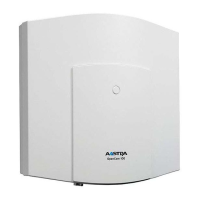Systematic Telephony
3
1. Systematic Telephony
The OpenCom 100 communications system, referred to hereafter as “the
OpenCom 100”, enables the connection of standard terminals (standard analogue
telephones, ISDN telephones and cordless GAP telephones). SMS-enabled ter-
minals and SIP terminals can also be used. With this configuration you can tele-
phone conveniently and use the features of the OpenCom 100 via code-number
procedures.
This guide describes how you operate your telephone in order to use the desired
functions. In most cases, you can do this by pressing the key combination
* and
#, R, together with a specific sequence of digits.
Please note the specific operating characteristics of your telephone:
On standard analogue telephones featuring pulse dialling, it is not possible to
enter data with the star key
* or hash key #.
As a result, the functionality of the OpenCom 100 features is only available to you
on a limited basis. It is thus better to use telephones equipped with dual-tone
multi-frequency (DTMF) dialling. Modern telephones often allow you to switch
between the two dialling modes.
When telephoning via SIP (i. e. telephoning via the Internet Protocol “Session Initi-
ation Protocol”) entry of the hash key
# is only permitted at the end of a code-
number procedure or of a call number. You can thus only use a part of the code-
number procedures on a SIP terminal. Furthermore, some SIP terminals offer
operation of features at the mere press of a button. Please review the user guide of
the manufacturer.
In the case of ISDN telephones, certain features can be operated via menus or
function keys. Refer to the operating instructions of these telephones for details.
On telephones with a display, you can read the caller’s telephone number if the
telephone supports this feature and the caller has activated it. What other infor-
mation is displayed depends on the telephone. Charge display (ISDN telephones
only) requires prior configuration by your network operator.

